#South Indian remakes
Text
Please elaborate why or why not in the comments/reblogs. You can send me an ask too if you don't want to under your username.
#remaking this i set it for a day sorry#that one person who voted please vote again 😭#nepalis and sri lankans im sorry ik you are desi too but here i exclusively mean Indians pakistanis and bangladeshis#but it wont fit in the word limit#desi tumblr#desiblr#desi tag#desi#india#pakistan#bangladesh#south asia#south asian#polls
51 notes
·
View notes
Text
We as a society need to start gatekeeping South Indian movies from Bollywood
#why do i feel like half of bollywood movies are just south remakes#bhool bhulaiyaa?? dhol?? jersey?? kabir singh?? tadap??#south indian movies should be off limits to them#till they can successfully make a movie about us without any stereotypes#and also show us that they know that there are more south indians besides tamilians#south indian#south indian movies#south indian cinema#bollywood#desi tumblr#desiblr#desi#indian
184 notes
·
View notes
Text
youtube
Watch the 2024 American Climate Leadership Awards for High School Students now: https://youtu.be/5C-bb9PoRLc
The recording is now available on ecoAmerica's YouTube channel for viewers to be inspired by student climate leaders! Join Aishah-Nyeta Brown & Jerome Foster II and be inspired by student climate leaders as we recognize the High School Student finalists. Watch now to find out which student received the $25,000 grand prize and top recognition!
#ACLA24#ACLA24HighSchoolStudents#youtube#youtube video#climate leaders#climate solutions#climate action#climate and environment#climate#climate change#climate and health#climate blog#climate justice#climate news#weather and climate#environmental news#environment#environmental awareness#environment and health#environmental#environmental issues#environmental education#environmental justice#environmental protection#environmental health#high school students#high school#youth#youth of america#school
15K notes
·
View notes
Text
(old) bollywood actresses (1)
why am i making this post...... no reason apart from being incredibly queer abt women (not romantic not sexual but a secret third thing (fan)). join me etc.
ruby myers (stage name sulochana)

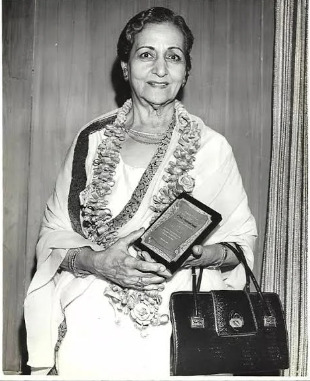
DADASAHEB PHALKE AWARD WINNER WHO CHEERED!!!!!!!!!!!
born in poona (now pune) in 1907 in british india, ruby myers was a silent film actress of bhagdadi jewish ancestry. she was approached by mohan bhavnani from kohinoor films, and though she was initially hesitant (acting was a very.... suspicious? dubious? profession for women at the time) she agreed with little knowledge of how to act. she ended up becoming a huge star under bhavnani, and then moved on to imperial film company, and became the highest paid actress in india at the time (5k/mo inr salary).
after sound got introduced, she took a break for a year (to learn hindustani which she wasn't fluent in) and came back with madhuri (1932)--- this is a remale of madhuri (1928) but w sound--- and became a star again. other remakes of her silent movies were bombay ki billi (1936) (remake of wildcat of bombay 1927), and anarkali (1935), a remake of anarkali (1928). unfortunately i don't think even one of these films survived.
she was also in a popular pairing with actor d billimoria from 1933-39. she faded into obscurity after their split.
she was also in another anarkali (1953), where she played salim's mother, and had a small role as a nun in dostana (1980).
she died in mumbai in 1983.
source
florence ezekiel (nadira)


born in 1932 in bhagdad, and living in nagpada (south bombay) after her parents moved for business reasons, nadira was a famous bollywood actress who usually played westernised roles (or anglo-indian ones). she is mostly well known for her role as julie's mother margaret in julie (1975) and maya in shree 420 (1956). the latter typecasted her in seductress roles. she has worked with several actors like sridevi (in julie), nargis (in shree 420), srk (josh (2000)).
fun fact! a filmmaker (idk who he was) once called her up for a role to which she replied along the lines of "not now i'm drunk and naked." he never called her again.
less fun fact! she was an alcoholic and had an alcohol-related liver disorder. she died in 2006 in a hospital in tardeo.
sources: 1 2
#thx reva for supporting me (saying POST POST POST in the sidelines)#absolutely self indulgent post...... love infodumping on the infodumping webbed site#hope i'm not annoying. if i am. sorry abt that. still gonna be a fan on main#saying fan and not queer bc i'm not into both of them. um#sorry guys. i tried with the alt image descriptions idk what some of the things they were wearing were :( n e ways#india#bollywood#desiblr#black and white era#ruby myers#nadira#they're both jewish so.#jumblr#iraq#sulochana#movies#movie recs#actresses#cinema#black and white cinema
18 notes
·
View notes
Note
I saw you added on my take xD, it's genuinely baffling to me that someone can look at Luis in RE4 and call him white or hell call himI MIXED. His og version was definitely mixed but remake Luis is in no way white.
It's like looking at Carlos and calling him tanned because he's not "dark" something I hate about Capcom is they were never clear on what exactly Carlos was meant to be. From what I've read he's meant to be Latin American with Indian mixed in there?
Carlos is supposed to be Native Indigenous and Latin American with Indian in his blood! In my opinion, it would make sense for him to be Brazilian, especially given that a large population of Brazil is descendant from Native South American Indian!
It’s said that he may be of Portuguese Ancestry! Carlos is a common name in all Latin American countries and "Oliveira" is a Portuguese surname, which again, goes hand in hand with thinking he could be Brazilian as Brazil is one of the several countries colonised by Portugal!


This next outfit is either CAPCOM handling native Americans very poorly or it’s indicative of Carlos being of native descent!

I agree that remake Luis is in no way white, especially since his parents are both completely unknown, only that on his maternal side their last names are Navarro which gives enough insight into at least one half of his race.
AND race isn’t characterised ONLY by skin colour, features come into play too- the shape of someone’s nose, eyes, lips, eyebrows, etc, all of that typically has a lot to do with race as well, some features are native features, some are aboriginal features, some are found in Asian genetics and so forth, you can’t tell me that Luis has the nose of a HWHYTE person because he surely does NOT
#tHANK YOU SO MUCH FOR THIS ASK I LOVE GETTING TO TALK ABOUT THIS#resident evil#luis serra#carlos oliveira#re4#re4 remake#ask
18 notes
·
View notes
Note
Colors of spice? Wtf does that even mean. Just browns, greens and blacks? Why not take inspiration from our colorful heritage, festivals, textiles or even the flora and fauna. Have they not seen our beautiful birds? Hello! Peacocks!
Do they know how to use google? How about open a history book or even a wikipedia article? Ffs their arrogance is staggering atp! 🤬🤬🤬
Seeing what Cressida is wearing this season I’m actually happy they didn’t take inspo from peacocks 😂
I feel like it was a throwaway comment which makes it worse imo. As if that’s what comes to your mind mentally when you think Indian or South Asian people. Really thought they were doing something with that spice comment. Sorry honey you were not.
But I agree with you anon! We have so much to look at for inspiration! I mean literally just look at latest South Asian fashion and just take what you will from there. Tbh an expert isnt even needed for colours and designs. We get it Kate’s looks aren’t priority this season but at least use google??? This also just shows they don’t know the bare minimum especially when they don’t know the difference between a dupatta and what Sarees are. Huge difference bro.
Thank god for all the other fugly looks this season (sorry but I’m not a fan) because if they kept everything the same and changed it up for Kate that’s weirdly alienating. You don’t have to make it so obvious she’s not English. They were on the right track last season imo. The dresses were western enough to suit Bridgertons aesthetic but also had the nice amount of Indian/South Asian flair. Literally all of those dresses I could easily remake by going to frantic stores in India.
I don’t really see a lot of Indian influence in the clothes right now. Sure we’ve only seen three outfits? But they’ve all been trash sorry. And post spice comment that reddish make out dress makes me think tandoori masala. Kate is a snack and a half (Anthony would know) but I’m sure that’s not what they were aiming for. The colours aren’t it. And nothing in the designs screams Indian either. It just looks bargain bin fabric.
The biggest issues for me is that they don’t suit Kate’s (Simone) skin tone? I’ve only seen gori gori Indian girls wear such neutral tones and look good. Simone looks great but she’s look way better in colours that were bolder. Nor is it culturally appropriate considering Kate’s young and newly married and usually brides wear bold and bright colours. Not neutral tones. Using jewel tones was 🤌🏽 and they should stuck to it. God what I wouldn’t do to have that Sheffields dinner dress Kate wears.
Let’s see what the other looks in the season are like for Kate. I’m not too optimistic but I guess shitty fashion is the compromise I need to make to get three seconds of kanthony time.
10 notes
·
View notes
Text
ok which one of y'all was gonna tell me that ghajini is actually a remake of a south-indian movie 🫠

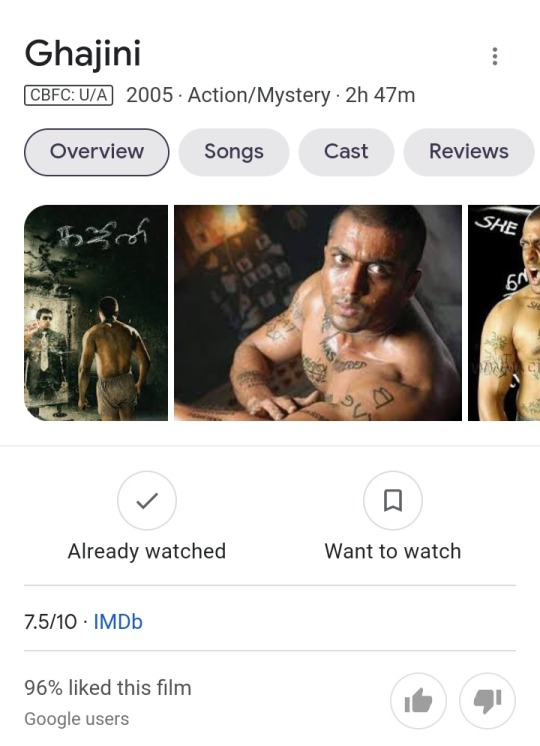
#thodi si duniya toot gayi meri ye jaan kar#kya hai ye#desi tumblr#desiblr#desi tag#desi teen#desi shit posting#desi culture#desi things
16 notes
·
View notes
Text
youtube
Watch the American Climate Leadership Awards 2024 now: https://youtu.be/bWiW4Rp8vF0?feature=shared
The American Climate Leadership Awards 2024 broadcast recording is now available on ecoAmerica's YouTube channel for viewers to be inspired by active climate leaders. Watch to find out which finalist received the $50,000 grand prize! Hosted by Vanessa Hauc and featuring Bill McKibben and Katharine Hayhoe!
#ACLA24#ACLA24Leaders#youtube#youtube video#climate leaders#climate solutions#climate action#climate and environment#climate#climate change#climate and health#climate blog#climate justice#climate news#weather and climate#environmental news#environment#environmental awareness#environment and health#environmental#environmental issues#environmental justice#environment protection#environmental health#Youtube
15K notes
·
View notes
Text
Me: The Disney!Aladdins, while highly entertaining, are yet another misrepresentation of Arab customs, clothes, settings and culture, as all of these were heavily influenced by South Asian clothes and aesthetics in both movies rather than strictly Arabian; and while the original folktale (which wasn’t even a part of the One Thousand and One Nights text originally) does mention "China" or sometimes "India" as its setting depending on the version, this expression is more used as a way to refer to a faraway land in general rather than the specific country and culture (exactly like saying "once upon a time, in a faraway land"). Proof being that whatever the setting is said to be (China or India), everything about the story remains Middle Eastern: the ruler is called a Sultan instead of an Emperor; the magical being in the story is a djinn (not any other being in Chinese folklore and mythology), the names themselves are Arabic (Aladdin = علاء الدين, ʻAlāʼ ud-Dīn/ ʻAlāʼ ad-Dīn), etc. Thus, Aladdin is inherently an Arab story (and probably Syrian in origin as the earliest recollection we seem to have comes from the Maronite storyteller Antun Yusuf Hanna Diyab, who was from Aleppo – or at least, he transmitted the most well known version); and bringing up the "Chinese or Indian" argument is misunderstanding the use of the expression as literal rather than metaphorical. Unfortunately, this is misrepresented in the Disney animated movie as well as its live action remake.
Also me: ARABIAN NIIIIIIIIIGHTS, LIKE ARABIAN DAAAAAAAAAYS, MORE OFTEN THAN NOT ARE HOTTER THAN HOT IN A LOT OF GOOD WAAAAAAAAAYS
15 notes
·
View notes
Text






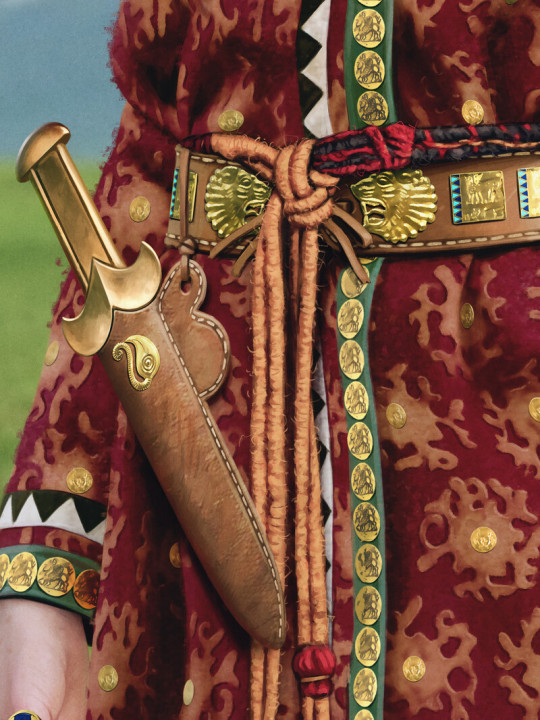

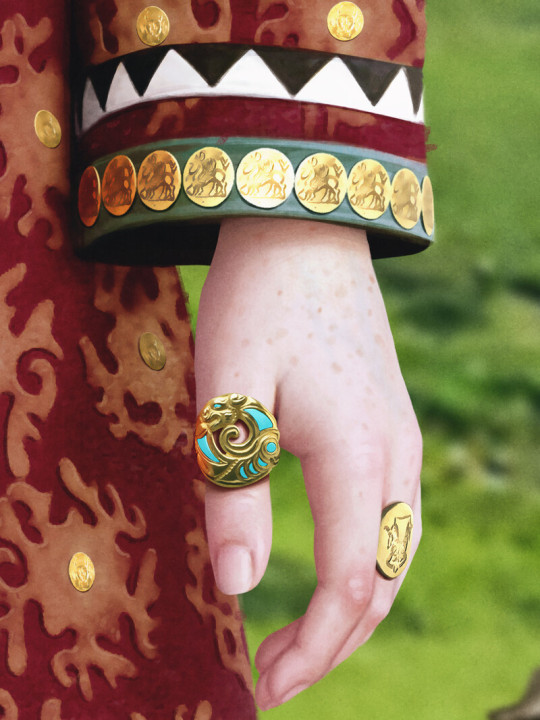
Joan Francesc Oliveras Pallerols
digital artist & illustrator
Roxana
Remake of ROXANA, Sogdian wife of Alexander the Great (? – 310 BC), somewhere in the Pamir mountains of modern-day Tajikistan. This reconstruction is highly speculative, because we know nothing about Sogdian female clothing of the Achaemenid period. But we know the Sogdians of this period were more like the nomadic Saka / Scythians to their north than the sedentary Persians and Bactrians to their south-west. The Sogdian warriors represented in Persian monuments like Persepolis or the tombs of Xerxes and Darius I, wear the same clothes as the Scythians. So I reconstructed Roxana’s dress based on what we know of Saka female clothing, like for example the preserved clothes of the “Ice Maiden” of Pazyryk, in the Siberian Altai mountains. The gold appliques are based on the Oxus Treasure, a Bactrian hoard from the Achaemenid period found in southern Tajikistan, containing objects in both the Persian “court style” and the Scythian “animal style” of the steppes. The neck ring is based on a find from southern Siberia that combines the Scythian and Persian styles. The crown is based on an undated find from Tajikistan, which has clear Achaemenid influence. The “akinakes” dagger is based on finds from nomadic burials (kurgan) between the Pamir mountains and the Aral Sea. The Indian etched carnelian bead necklace is based on finds from the same nomadic burials. Sogdian terracotta figurines from Samarkand dating to the 1st-3rd centuries AD show women with dots painted or tattooed on their cheeks, so I included it. Regarding the red hair, the only surviving representation of Roxana (or alternatively Stateira, Alexander’s other wife of Persian royal lineage) is in a Roman fresco from Pompeii, that is probably a copy of a lost Greek original. The fresco from Pompeii represents her as a pale-skinned redhead, which was a highly idealized complexion for women in ancient Greece, something that is not beyond the realms of possibility among East Iranic peoples and matches Greco-Roman authors describing Roxana as “the most beautiful woman of Asia”. The same Roman fresco represents Alexander with dark blond or light brown hair and tanned skin. The Saka cauldron behind her is based on a find from southern Uzbekistan, which was used for decades in the kitchen of the local family that found it.
9 notes
·
View notes
Text

Welp, I wasn't able to hold-out more than 24 hours before turning on the original Tamil version of Vikram Vedha. The story really is like original and remake, in that the story is the same (same storyline, same twists, etc.), with only a few scenes here and there being changed. Vedha's initial appearance in the same, as is his escape leading to the second story; the changes are minor things, like the interactions between Vikram & Priya, a bit about Chandra's post-theft personality, and some of the locations that the fights happen at (but not the final fight sequence).
The Bollywood version, I think, was much more about style - both with the leads and with the way the story is filmed/portrayed. What this version sorta lacks in style (it, to some aspects, "feels" more like a South Indian movie, which is not a bad thing), it makes up for by I think having a better emotional connection between characters and for us to latch on to.
Vedha's relationship with his brother is the same in the two movies, but the scene where Vedha is telling Priya about his brother whilst they sit in cars just seems to have more emotion here (based on what I was seeing, I mean; the actual words were lost on me, because I had to use subtitles for the Tamil movie). Even the interactions between Vikram & Priya seemed to just show a bit more emotion here than we got in the remake.
I think the fun we saw between our leads here is very similar to what the Bollywood movie gave us - the chemistry, their interactions, etc. Vijay Sethupathi, who I've now seen played the bad guy in 2 movies in relative quick succession (Jawan before this), is I think much better here (maybe because he's better scripted, given that he's essentially lead 1B in this case), and is great. Madhavan is, of course, also great. There just feels to be more of an emotional charge here (I considered watching the Hindi dub, and maybe I should have, because I'm sure I was missing a lot of that by just trying to read the subtitles and grasp their emotions thru music and expressions). I did like the title song/music better in the Bollywood version; I think it seemed a little more refined, though it is the same background music.
In terms of the story, I do really like how they play out this "good v/s evil" thing, even if they spoon-feed it to you multiple times by drawing the line. And while I don't really agree with the idea that 'everyone is a hero if you tell the right story' (I used to believe that, until a couple of years ago; then the world kicked in, and it became clear that no, some people are just evil assholes), but I do like how it is played here with the idea that sometimes, both options are on the same side of the line, which makes the whole 'good v/s evil' kinda moot and makes the decision a lot tougher.
But that's where we sit here now - movie and its remake, one with more emotion throughout, the other with slightly more style. Both fun and well-done and well-acted.
2 notes
·
View notes
Text
As much of the world was focused on Chinese President Xi Jinping’s high-profile visit to Moscow last month, it was lost to many observers that Japanese Prime Minister Fumio Kishida was in Kyiv at the same time on an equally consequential visit. Making an unannounced trip to see Ukrainian President Volodymyr Zelensky, Kishida offered Japan’s solid support.
Three themes immediately stood out from the simultaneous presence of Xi in Moscow and Kishida in Kyiv. First, it pointed to East Asia’s active and growing role in shaping European security, perhaps for the first time since the medieval Mongol invasions. If China joins Iran in more actively supporting Russia in Ukraine, it would have profound implications for the course of the war—and the map of Eastern Europe. South Korea has emerged as a major weapons supplier to Poland, which is transforming into NATO’s most important military frontline state. The presence of the so-called AP4 (Australia, Japan, New Zealand, and South Korea) at NATO meetings is becoming routine.
Second, Kishida underlined that China’s view of the war in Ukraine is not necessarily the view in the rest of Asia.
And third, the parallel visits exposed the hollowness of Xi’s claims to be a neutral peacemaker in Ukraine. Even as some European leaders, like French President Emmanuel Macron, have hailed Xi as Europe’s savior who can mediate an end to Russia’s war, Kishida’s meeting with Zelensky served to highlight the one-sided nature of Beijing’s so-called peace initiative in Ukraine.
Traveling to Ukraine seems to have given a bounce to Kishida’s sagging ratings at home, but it also underlines the definitive break from decades of Japanese passivity on the world stage. Although it was perhaps coincidental that Kishida found himself in Kyiv at the same moment that Xi was in Moscow, his trip to Ukraine illustrated Japan’s emergence as a geopolitical actor to be reckoned with.
To be sure, the remaking of Japan as a key power in the security sphere began under the late Shinzo Abe, the former prime minister who undertook the onerous task of getting Japan to rethink its role in Asia and the world and shake off the political shackles of the past. Abe made much progress on revamping Japan’s national security policies during his two tenures as prime minister, from 2006 to 2007 and from 2012 to 2020.
But few expected Kishida to build on Abe’s strategic legacy. Abe’s shoes were big to fill, and Kishida was widely viewed as weak. The Ukraine crisis, however, offered a huge opportunity that Kishida seized with both hands to radically reorient Japan. If Abe had to struggle to get his ideas accepted by the political class, Russia’s attack on Ukraine has heightened popular awareness of the fundamental changes in Japan’s security environment. That a major power armed with nuclear weapons could invade a neighbor with impunity, seeking to unilaterally change borders by force, shook Japan to the core. Kishida’s plans to double defense expenditure over the next five years; modernize the military to better deter North Korea, Russia, and China; and take on a larger regional security role have thus found less resistance.
Long viewed as passive and pacifist, Japanese foreign policy seemed to produce few strategic ideas of its own. Tokyo was happy to follow Washington’s lead while avoiding challenging Beijing. Over the last decade and a half, however, Japan has begun to develop new geopolitical approaches, promote them, and get them accepted by allies and partners.
None of Japan’s foreign-policy innovations are more important than the invention of “Indo-Pacific” as a geostrategic concept and the establishment of the Quadrilateral Security Dialogue (or Quad), both of which are now integral to Asian geopolitics. Abe first outlined both ideas in an address to the Indian Parliament in August 2007. It was one thing to frame new ideas in a speech—and entirely another to get others to see their merit.
The initial international response to both ideas was skepticism among Japan’s friends and outright hostility from Beijing. But Japan’s sheer persistence and a rising China’s growing assertiveness saw Tokyo’s Quad partners—Australia, India, and the United States—come around to accepting Abe’s ideas.
In late March, Kishida also traveled to India to offer an upgraded vision for the Indo-Pacific that outlined a range of ideas to strengthen the region’s security, and he presented a more ambitious Japanese contribution to realizing it. This includes joint military training, and cooperation on maritime security.
A third important innovation from Japan was to transcend the “hub and spokes” system that defined the postwar U.S.-led security order in Asia. While Japan attaches great significance to its bilateral alliance with the United States, it has recognized the importance of directly connecting the spokes. Japanese efforts to build bilateral strategic partnerships with other countries in the region complement Tokyo’s alliance with Washington and deepen the basis for regional security amid growing Chinese military power and diplomatic assertiveness, with its destabilizing impact on the region. The strongest of these new regional relationships are with Quad partners Australia and India, but ties to South Korea and the Philippines are strengthening as well.
A key goal of Japan’s regional strategy is to strengthen the defense infrastructure and capabilities of Indo-Pacific states. If the Abe administration sought to give Japan’s substantial overseas development assistance a strategic character, Kishida is now developing a framework for overseas security assistance. These new Japanese initiatives have full U.S. support, with Washington eager to see its allies and friends become stronger by collaborating with each other and making themselves more capable in coping with the challenge from Beijing.
Just as important as Japan’s role in developing a new security architecture for Asia are Tokyo’s efforts to tie Europe to the Asian security order. Similar to the way Abe’s Indo-Pacific concept imagined the strategic unity between the Indian and Pacific oceans, he also recognized the deep interconnection between security in Europe and Asia.
It was nearly five years ago that Abe was inviting Britain and France, Western Europe’s leading military powers, to contribute to Asian security. Abe understood that isolationist pressures on U.S. foreign policy—which became so visible during the presidency of Donald Trump—meant that Asia couldn’t rely solely on the United States for its future security. Abe looked beyond the region for further partners to manage Indo-Pacific security challenges.
Since then, many European powers, including France, Britain, Germany, and the Netherlands, have outlined Indo-Pacific strategies. The 2022 U.S. National Security Strategy issued by the Biden administration also underlines the need for allies and partners in Europe and Asia to work together.
One of Abe’s last acts before his life was cut short by an assassin was to raise the question of Washington’s extended deterrence in Asia and to call for a debate on deploying U.S. nuclear weapons in the region. So far, Kishida has rejected nuclear sharing with the United States, and he has repeated the Japanese commitment to nuclear disarmament and nonproliferation. But the issue of a U.S. nuclear security commitment to Asia is unlikely to go away as China continues to modernize and expand its nuclear arsenal.
Underlying Japan’s new security vision is a clear recognition of the Chinese threat to Asia. Unlike many of its European peers who were or still are unwilling to come to terms with Russia’s or China’s aggressively revisionist ambitions, Tokyo has not let its massive economic exposure to Beijing get in the way of dealing with it. Proximity surely helped Tokyo perceive the problem clearly, but Japan had to overcome the inevitable constraints presented by the dangers of sharing a contested maritime frontier with China.
Equally significant has been Japan’s decision to highlight the implications of Russian aggression against Ukraine. In arguing that “Ukraine is the future of Asia,” Kishida has pressed Japan and Asia to see the implications of a nuclear-armed power unilaterally changing the territorial status quo.
With its increasingly clear-eyed security policies, Japan is reminding the West—especially Europe, which had become geopolitically complacent in the decades after the Cold War—that coping with the challenges presented by China and Russia demands greater discipline. This includes a much needed strategic outreach to the global south, where Kishida has called on other G-7 countries to do more to address developing countries’ own concerns and priorities instead of projecting Western policies and preaching to them about how to run their affairs.
As it rises to become a major geopolitical actor in Asia and the world, Japan has become the unlikely actor persuading the West to rethink its strategic assumptions. As France’s Macron and other European leaders struggle to come to terms with the challenges presented by Russia and China, Japan has injected a much-needed sense of clarity to the strategic discourse in Europe and Asia.
5 notes
·
View notes
Text
Toonami Weekly Recap 06/03/2023
Dr. Stone: Nerw World (Age of Exploration Arc) EP#36 (01) - The Taste of Failure: Returning from their balloon flight, Senku reveals to Ryusui his plan to construct an oil-powered ship to reach the source of the petrification ray, South America. Before that, they must successfully locate the still existing Sagara Oil Field. Ryusui enthusiastically agrees to help navigate as ship's captain. Realizing their journey across the ocean will require tons of preserved food they use their balloon and search teams on the ground to locate cedar trees for shipbuilding, wild animal herds for hunting, and an entire valley of wheat to make flour. To increase food production Senku introduces crop farming, freeing the village from their reliance on foraging. Taiju, Magma, and Yo take to farming with particular enthusiasm as more food means they can afford to free more statues from petrification. Senku’s first attempt to bake bread is so bad it is practically poisonous, so he and Ryusui agree they must find a professional chef and free them from petrification immediately.
Unicorn: Warriors Eternal EP#06 - The Mystery of Secrets: Following the aftermath of the Octopus monster rampage, the mayor of London demanded Hastings about the incident. Sailor Jim, who was secretly paid from the benefactor, inform them that he spotted a Fox from the dock and located her hideout at the abandoned church. As the Scotland yard arrived at the church, the Evil ambushed them and quickly escape feeling betrayed. The Unicorns tries seek help from the factory on repairing Copernicus but remained helpless. Seng venture into the sea of time to find answers on activating Copernicus. With Seng's departure, Melinda/Emma and Edred are invited by the automaton butler, Dashwood, to help repair Copernicus. Dashwood transport them to an isolated lab and introduced his inventor and benefactor Otto who was willing to fix Copernicus body parts. During their wait time, Emma tries to reach out and reason with Melinda over what happened in the past not being her fault, but Melinda not only won't allow it but also wants nothing to do with Emma at all. Otto successfully rebuild Copernicus body parts but his consciousness remained mysteriously powerless. The Evil attacks them and Melinda clashes allowing Edred to summon his sword to vanquish Evil permanently. Seng returns from the cosmic realm and revealed Edred's knowledge on fixing Copernicus. Seng confirms that they must travel to Edred's home, along with a cryptic message, "The blood to remake will flow for all time."
Food Wars: The Fifth Plate (The BLUE Arc) EP#84 (11) - The Taste of Failure: As the match continues, Alice and Hisako bring Azami to the tournament, where he reveals that all of his actions in raising Erina were in an effort to prevent the despair that Mana fell into. Asahi then completes his dish, which is a French basty filled with shark fin soup, Indian spices, and ravioli filled with Turkish dondurma. Asahi's dish impresses the judges and even Mana herself. Soma responds with his own dish, which is fried rice that combines Chinese dongpo pork, Italian acqua pazza, Indian poriyal, French mirepoix, and Turkish pilaf. The judges are shocked at the insane risk Soma took to combine all the various flavors together. Even Mana is shocked by the dish when she realizes Soma used ouef mayonnaise to coat every individual pilaf grain in a thin coat of egg yolk to lock their flavor in. Soma reveals to Asahi that this fried was based on one of his mother's failed dishes that he learned from her, and the one critical element it has that Asahi's dish doesn't is "the taste of failure". Mana ends up being equally impressed with Soma's dish, leaving everybody uncertain on who will be declared the winner.
#Toonami#Toonami Weekly Recap#Dr. Stone#Dr. Stone: New World#Age of Exploration Arc#First Episode#First Season Episode#Unicorn: Warriors Eternal#Food Wars: Shokugeki no Soma#Food Wars: The Fifth Plate#The BLUE Arc
6 notes
·
View notes
Note
Okay, so Vale has combat schools based on light, right? Like Signal and Pharos and Beacon? So why does Mistral and its China-Japan aesthetic have the lamp relic? When jinn are Arabic? Even though Vacuo is based on MENA countries?
orientalism, that’s literally the easiest way i can put it.
they wanted the lamp for mistral but of course the spirit associated with the lamp was going to be a djinn, because the closest association crwby has with lamps & spirits is the orientalist depiction from aladdin. it’s the same reason jinn is blue, something that came directly from the disney adaptation with an extra sprinkling of sexualization because she’s completely butt ass naked. however djinn from islamic texts are often associated with fire, darker skinned & clothed.
really this conflation of arab / mena cultures with south asian / indian culture & then east asian cultures like china & japan really didn’t begin with crwby, as the original aladdin & the live action remake have done little to nothing to stop mixing indian culture with arab culture. it’s been this way for a long time because of the islamization of both mena cultures & indian cultures, so the fault doesn’t lie with crwby or their white audience but they certainly didn’t do anything to unpack it or make it better.
18 notes
·
View notes
Text
Episode 136 - Lady Problems, or Problem Ladies? Pataakha, Good Luck Jerry, and Darlings
We do our best to not feel the wrath of these women scorned as we check out three recent(ish) black comedies with female leads. Also lots of good music recommendations in this one.
Notes:
Black Comedy
That Mel Brooks quote was basically right: “Tragedy is when I cut my finger. Comedy is when you fall into an open sewer and die.”
Pushing The Envelope: Being Cyrus and Delhi Belly, with Suchin Mehrotra
Not dependent on wordplay and puns, so might work better for people who don’t speak Hindi?
Pataakha
Everyone understands the Wario analogy
Radhika Madan
“Cows Around”, by Corn Lund and the Hurtin’ Albertans
Maybe both Pataakha and Jojo’s were influenced by Sabai?
SPOILER ZONE: 24:21- 27:45
(INTERVAL (“Paracetamol” from Good Luck Jerry)
Good Luck Jerry
“Girl, You Have No Faith In Medicine” by the White Stripes
Kolamaavu Kokila
Maybe the South Indian film fans were right?
Knockoff Pankaj Tripathi?
Comic book imagery as lazy storytelling
Remake Heartbreakers with Jahnvi Kapoor and Tabu, you cowards
Darlings
The Year of Shefali Shah
“Goodbye Earl” by the Chicks
Next time: school movies
Bollywood is For Lovers is a member of the Alberta Podcast Network
Check out Alberta Blue Cross!
Visit the Edmonton Community Foundation!
Find us on Apple Podcasts! and Stitcher! and audioBoom! and iHeartRadio! and Spotify! and Google Podcasts!
Thank you to Becca Dalke for the artwork!
Follow us on Twitter!
Like us on Facebook!
#Pataakha#Radhika Madan#Sanya Malhotra#Sunil Grover#Vijay Raaz#Vishal Bhardwaj#Good Luck Jerry#Kolamaavu Kokila#Janhvi Kapoor#Samta Sudiksha#Deepak Dobriyal#Mita Vashisht#Neeraj Sood#Saurabh Sachdeva#Jaswant Singh Dalal#Darlings#Jasmeet K Reen#Alia Bhatt#Shefali Shah#Vijay Varma#Roshan Mathew#Rajesh Sharma#Vijay Maurya#Bollywood#Hindi Cinema#Netflix India
2 notes
·
View notes
Text
After reading The treatment of Bibi Hadar it made me realize that not everyone is as open or accepting to the disability Community as the US is. Don’t get me wrong we still have a long way to go and there are still so many problems with how people in the United States treat disabled people but I want to shed some light on why I think people were so intent on marrying Bibi off.
Growing up as a white girl in a predominantly South Asian community I've gotten to learn a lot about their culture. I grew up celebrating Christmas with my family but we also celebrated Diwali with my Indian Neighbors. Lunar New Year and Gregorian New Year were talked about with the same gusto. Although most of my experiences in this predominantly South Asian community were positive there was one cultural difference that I couldn't get around, how South Asian cultures view disability. “historically – particularly in many Asian countries – disability has been considered a taboo or shameful thing.” (Dhanda) I had multiple friends who were South Asian and also disabled, they would tell me the painful stories of exclusion and ignorance from their family members or family friends in the same culture.I have plenty of reasons why I think the South Asian community in particular has a hard time accepting disability and one of this may be that their religion is based on omnipotent but not necessarily benevolent Gods, they might think that someone being born with a disability means that the mother is cursed or somebody acquiring a disability means that they did something to deserve it, and even though logically they might eventually understand that is not the case it can be hard to override tradition and religion that have been ingrained in your brain for so long.Another reason why South Asians might have a harder time accepting disability is best said from the South Asian disability advocate Cara Yar Khan “Our community still prescribes to the charity model or the medical model of disability and so it is this idea that because now I have a disability, my life will not be as fulfilling or as happy. Or, hope is only possible if there is a potential treatment or cure for my condition.” (Rajani) By writing about this I'm not trying to hate on my South Asian friends, Or sound racist and if that is what this sounds like please let me know. I am simply trying to bring light to an issue that not a lot of people talk about in many of these cultures. Unfortunately the longer we live the more likely we are to either know someone who is disabled or acquired disability and so the fact that in many of these cultures people with disabilities feel like they cannot authentically be themselves is a problem. I am so thankful for the people that are willing to question tradition and change their thinking.
Works Cited
Dhanda, Shani. “My Culture Can Be Ignorant about Disability - I’m Smashing the Stigma.” Metro.co.uk, 19 Aug. 2021, https://metro.co.uk/2021/08/19/my-culture-can-be-ignorant-about-disability-im-smashing-the-stigma-15118377/.
Rajani, Harshada. “Remaking a World That Wasn’t Built for Us.” South Asian American Digital Archive (SAADA), 18 Apr. 2022, https://www.saada.org/tides/article/remaking-a-world.
1 note
·
View note
Text
The Shah Rukh Khan film Jawan is a big hit in Tamil Nadu, where it is predicted to be the biggest Hindi film ever.
While most Bollywood actors choose remakes of South Indian films, Shah Rukh Khan made an exception. For Jawan, he hired a director from the Tamil film business, Atlee. Actors like as Nayanthara and Vijay Sethupathi, who are well-known in the South, have also joined the cast. In the Tamil market, Atlee is also a rising celebrity. As a result, Jawan has sparked a historic frenzy not only in Hindi-speaking areas but also in Tamil Nadu. This is evidenced by the fact that advance booking has opened to a brisk response.
"The advance booking is very good," said Ruban Mathivanan of GK Cinemas in Chennai. It's viewed as a Tamil film in this country. If the material is successful, Jawan will be unstoppable in Tamil Nadu. It could turn into another RRR or KGF."
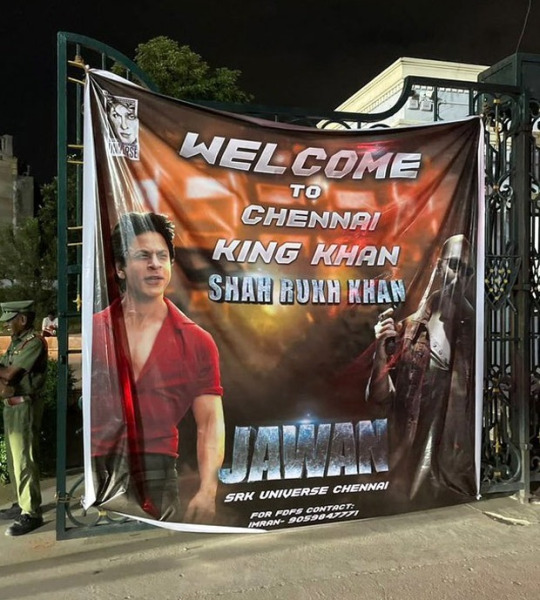
"Jawan can emerge as the biggest Hindi film," he acknowledged, adding, "the buzz picked up after the event in Chennai and after the trailer was released." On August 30, the film's pre-release ceremony was held in Chennai, Tamil Nadu's capital. This much-anticipated event will take held at Chennai's Sri Sairam Engineering College, according to Bollywood Hungama.
Furthermore, Jawan will face no objection from local Tamil releases. "Some small films are releasing on September 8," Ruban Mathivanan added. It will not compete with Jawan."
"The makers are targeting a huge number down South," said Vishek Chauhan, owner of Roopbani Cinema in Purnia, Bihar. As you can see, Jawan is a Tamil film starring a North star. The director and key actors come from the South. I wouldn't be astonished if it grosses Rs. 10 crores on the first day in Tamil."
Jawan also stars Sanya Malhotra, Sunil Grover, Ridhi Dogra, and Yogi Babu in addition to Shah Rukh Khan, Nayanthara, and Vijay Sethupathi.
Jawan is predicted to perform well in both Andhra Pradesh and Telangana. On Friday, September 1, Venkat Prasad, Senior Manager of Programming at Hyderabad's famed theatre, Prasads, was all grins as he informed us, "The advance is tremendous." We opened booking for a very restricted number of concerts. And all eight shows were sold out in record time."
"The advance booking is more than any Hindi film and also quite fast," he added. "Even the weekend shows are quickly filling," he noted. We'll gradually increase the number of shows now."
#shah rukh khan#bollywood news#bollywood hungama#Latest Movies 2023#jawan#bollywood latest news#Bollywood Latest updates
0 notes
Text
Nupur Sanon - Juggling Both Music and Acting

Introduction
It is said that talent runs in the family, and that is evident in the case of Nupur Sanon. As the younger sister of famous Bollywood actress Kriti Sanon, Nupur has proven herself to be a multi-talented force in the Indian entertainment industry, excelling in both music and acting.
Redefining Musical Talent
Starting in 2005, Nupur announced herself to the world as a talented singer by posting impeccable song remakes on YouTube. Over time, she garnered a loyal following, posting covers of popular songs like ‘Bekarar Karke,’ ‘Tere Sang,’ ‘Hawaayein,’ ‘Janam Janam,’ and ‘Laaiyan Laaiyan’. Alongside her musical talent, Nupur also possesses natural acting skills, which enabled her to transition seamlessly into the film industry.
Making a Name on the Big Screen
Nupur’s unforgettable on-screen debut came in 2019 with the music video "Filhaal," where she shared the screen with Bollywood actor Akshay Kumar. Their collaboration continued with the 2021 release of "Filhaal 2," which showcased Nupur taking on bigger roles in acting.
Diving Deeper Into Acting
Nupur’s endearing performances caught the attention of filmmaker Sajid Nadiadwala, who decided to cast her in one of his upcoming films. Since then, she has been proactively taking acting courses to polish her skills and make a name for herself in the highly competitive Bollywood industry.
Upcoming Projects
Nupur Sanon's upcoming filmography includes exciting projects such as the Bollywood film "Noorani Chehra" with Nawazuddin Siddiqui and the South Indian movie "Tiger Nageswara Rao" alongside Ravi Teja. These projects are a testament to her acting abilities, and her seamless transition between the two major film industries showcases her versatility as an actress.
Balancing Music and Acting
Despite her growing success in acting, Nupur has not left her love for music behind. She continues to release covers on her YouTube channel and is focusing on honing both her acting and singing skills. This dedication to both aspects of her art speaks volumes about her passion for the entertainment industry.
Conclusion
As Nupur Sanon stands at the threshold of a blossoming career in both music and acting, she represents the epitome of hard work, determination, and multi-faceted talent in the Indian entertainment industry. With her enchanting voice and magnetic on-screen presence, Nupur's exciting journey as both a singer and an actress is only just beginning.
0 notes